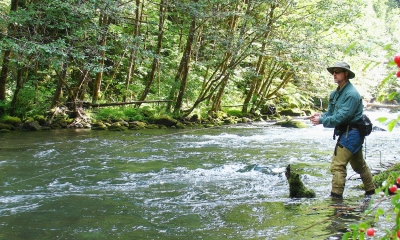
Sharks
Sharks have been around for over 400-million years and have survived 5 mass extinction events. Worldwide there are over 500 species of these prehistoric sea creatures. Along Oregon's coast a number of species can be found including the salmon shark, white shark, spiny dogfish, soupfin shark, common thresher shark, basking shark, blue shark, and several others. Some species like the white shark and basking shark are prohibited from harvest.

Types of Sharks

Features: Blue sharks are named for their brilliant blue color. They are slender with a long, pointed nose. They can grow to be 12-feet long, though they rarely get over 10-feet.
Habitat: Blue sharks are found in all the world’s temperate and tropical oceans. They have been spotted as far north as Norway and as far south as Chile. They roam both open and coastal waters in search of octopuses, squid, cuttlefish, and fish.
Technique: Typically chumming the water will attract blue sharks. You will need a wire leader to protect your line from the blue shark's saber-shaped teeth. Fins and tails must remain attached and disposed of with carcass.

Features: Great whites are blue to gray on top and white underneath. They can grow as large as 20-feet long and weigh in excess of 4000 pounds! They have several rows of teeth in their large mouths.
Habitat: Great whites stay in temperate ranges with water temperatures between 54- and 75-degrees Fahrenheit, including waters off the west coast.
Technique: Great white sharks are protected under federal and state laws making them illegal to target or keep.

Features: Spiny dogfish are gray or brown with white spots on their back and a white belly. They can grow to be 5-feet long. They are called "spiny" as they have a spine behind each of the fins on their backs.
Habitat: Spiny dogfish are widely dispersed, traveling from Alaska to Chile, and from intertidal waters down to 3,000 feet. They mostly eat small fish, squid, and octopus.
Techniques: Being relatively small, spiny dogfish can be taken with light tackle. They tend to school around prey over soft bottoms. A good amount of weight will probably be necessary to keep your bait or lure near the bottom where the sharks often are. A wire leader is recommended to keep the shark from biting through the line. When landing the fish, be careful of the venomous spines in front of the dorsal fins.

